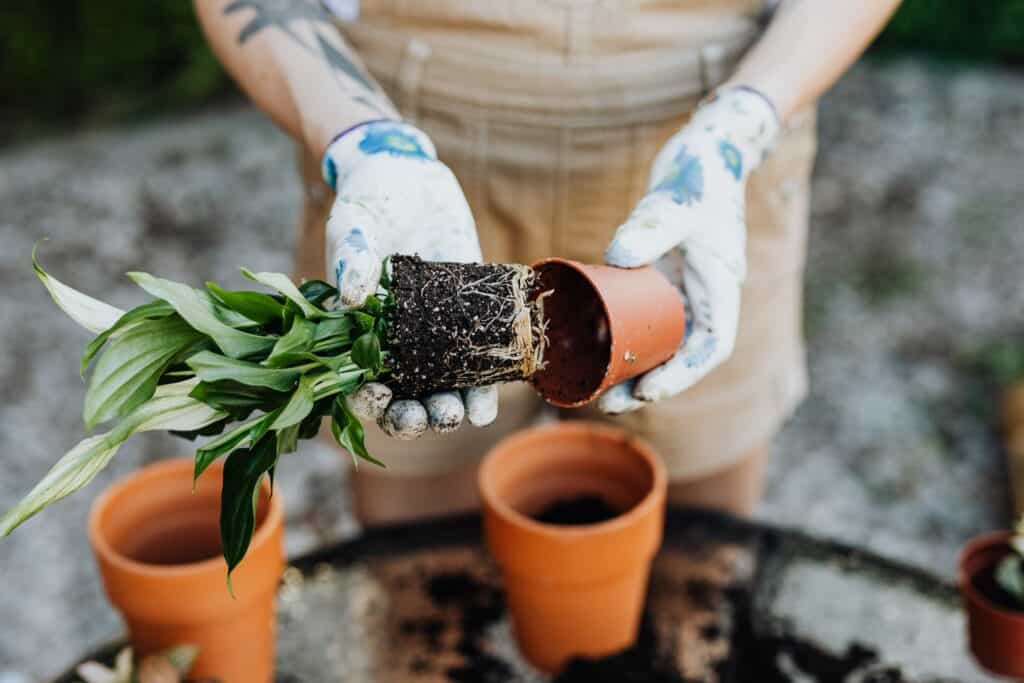
Maintaining a garden can be rewarding, but it can also be time-consuming. With this in mind, a low-maintenance garden is an ideal solution for time-poor gardeners — they’re designed to be functional and beautiful without the upkeep!
From selecting the right plants to incorporating hardscaping features, there are various strategies you can use to create a low-maintenance garden that enhances your outdoor living space.
Here, we’ll explore various tips and techniques for creating a low-maintenance garden that’s easy to care for. Whether you’re a seasoned gardener or just starting out, we have low-maintenance garden ideas to help create a vibrant, thriving garden with minimal effort.
#1. Container gardening
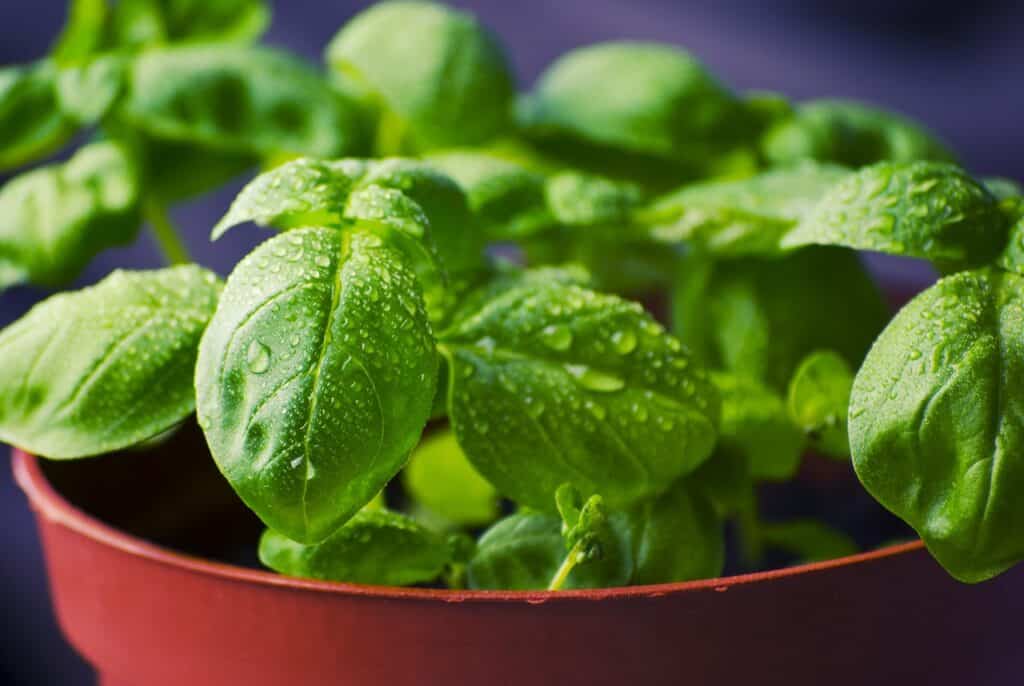
Container gardening is ideal in limited spaces like balconies, patios, or small gardens. Growing plants in pots and containers is a convenient, low-maintenance solution — they require less weeding and less watering and have fewer pest and disease problems.
One of the major benefits of container gardening is that it’s flexible. You can grow various plants in containers, like herbs, vegetables, and flowers:
- Herbs like basil, parsley, and thyme are always popular — they need little space to grow and can be used in cooking.
- Vegetables like tomatoes, capsicums, and lettuce can also be grown in containers, providing fresh produce for the kitchen.
- Flowers like petunias, marigolds, and pansies add colour and beauty to any space, all from the confines of a pot or container.
Container gardening also provides better control over the growing conditions of your plants. You can choose the soil mix, fertiliser, and watering schedule, and the containers can be moved to different locations to adjust for changes in light or temperature.
#2. Raised garden beds

Raised garden beds are essentially garden beds raised above the surrounding soil level, with walls made from durable materials like wood, stone, or concrete.
One of the main benefits of raised garden beds is that they’re easy to maintain. Because the soil is contained within the bed’s walls, less weeding is needed than in traditional in-ground gardens. Plus, raised beds can be filled with high-quality soil free of rocks, weeds, and other debris, making it easier to maintain healthy plants.
The height of the bed can also be customised for you, making it easier to plant and maintain your garden. For example, if you have a bad back or knees and have trouble bending over, a higher-raised bed can reduce the need for bending.
#3. Native plants

Native plants have evolved to thrive in the harsh Australian climate and soil, making them ideal for gardeners with limited expertise or time on their hands. Here are some key reasons to grow native plants in your garden:
- Water conservation: Australia is prone to drought, but native plants have adapted to dry conditions and require less watering than non-native plants, meaning you can cut back on water consumption.
- Low maintenance: Native plants need less maintenance than non-native plants because they’re less prone to pests and diseases and don’t require fertilisers or other chemicals to grow well.
- Wildlife habitat: Many native plants provide habitat for local wildlife, like birds, butterflies, and other insects. This helps create a more biodiverse garden and supports local ecosystems — for example, some native plants produce nectar that attracts bees and other pollinators, which is essential for food crops.
- Aesthetic appeal: Native plants come in various colours, shapes, and sizes and can create a beautiful, unique-looking garden.
- Sustainability: Growing native plants is a sustainable choice because it reduces the need for water, fertilisers, and other resources required to maintain non-native plants. Plus, growing native plants can help to preserve local biodiversity and protect endangered species.
If gardening time rarely makes it into your schedule, growing native plants is the perfect solution. These plants will take care of themselves for the most part while adding colour and interest to your outdoor space.
#4. Xeriscaping
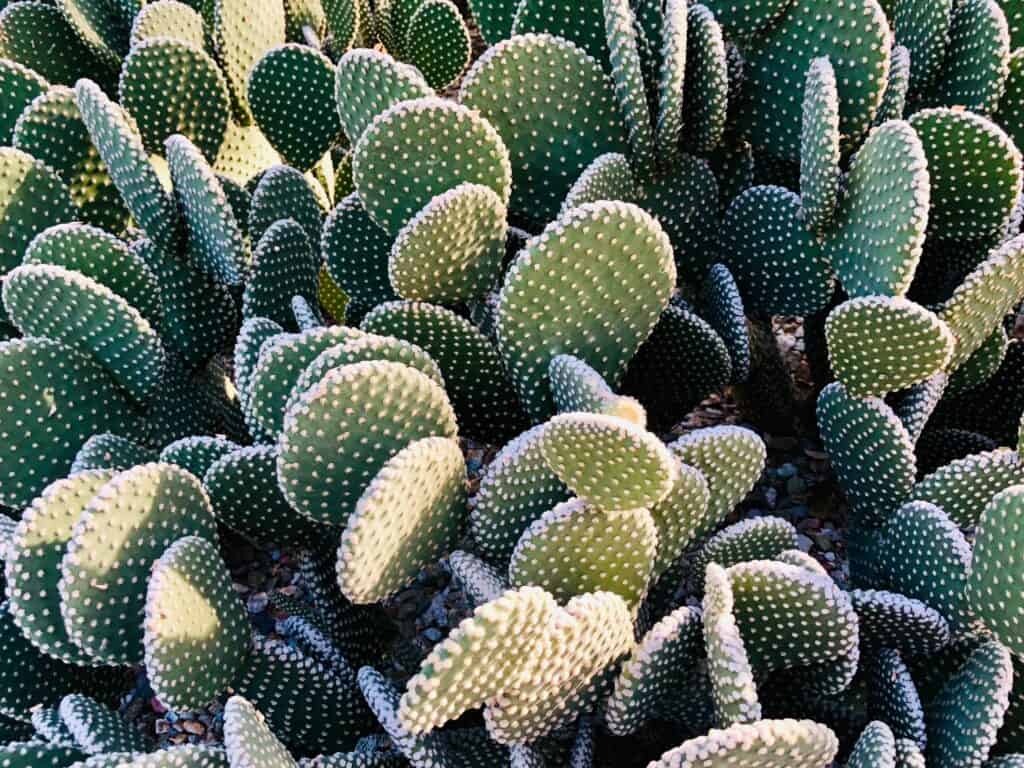
Xeriscaping is a low-maintenance gardening technique designed to reduce water consumption while maintaining a beautiful and functional outdoor space. It’s especially useful in dry climates where water is limited. Here are some of the key features of xeriscaping:
- Drought-tolerant plants: Xeriscaping involves growing plants that have adapted to dry conditions. These plants are called “drought-tolerant” or “water-wise” plants, needing less water than others. Examples of drought-tolerant plants include succulents and cacti.
- Soil improvement: By improving the soil in your garden, you can help to retain moisture and reduce the need for watering. This can be achieved with organic matter, like compost or leaf litter, improving soil structure and increasing water retention.
- Water-efficient irrigation: Xeriscaping also involves water-efficient irrigation methods, like drip irrigation or soaker hoses. This delivers water directly to the roots of plants, reducing evaporation and waste. Plus, watering can be timed to avoid the hottest part of the day, ultimately reducing water consumption.
- Mulching: Finally, xeriscaping often involves mulch to retain moisture in the soil, reduce weed growth, and regulate soil temperature.
So, if you live in a dry area or have limited time to spend gardening, xeriscaping might be a low-maintenance solution to add plant life to your front and backyards.
#5. Succulents
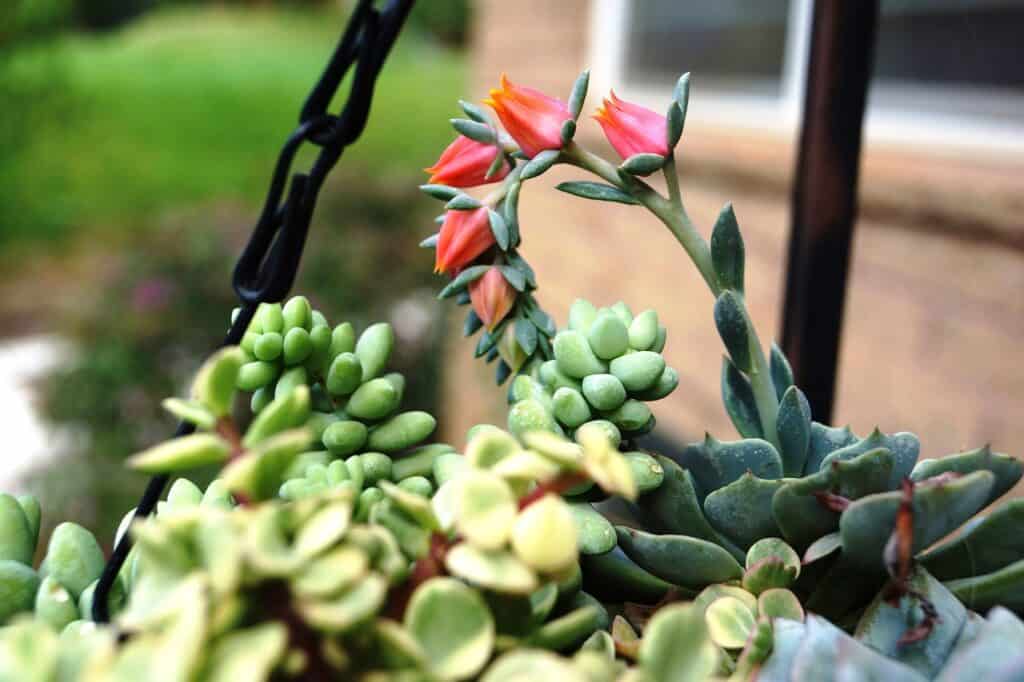
Succulents store water in their leaves, stems, and roots, allowing them to survive in hot or dry environments. In fact, overwatering is the most common cause of succulent death, so you only need to water them when the soil feels dry!
Other attractive benefits of growing succulents include:
- Low-maintenance: Succulents are a great option for gardeners who want a low-maintenance garden. They require little water, fertiliser, or pruning and are pest and disease-resistant. This makes them ideal for busy homeowners or those without a lot of gardening experience.
- Versatility: Succulents can be grown in containers or in the ground — they can be used as ground cover in rock gardens or pots on a windowsill. Plus, there are hundreds of varieties of succulents, each with a unique shape, colour, and texture.
- Aesthetic appeal: Succulents are known for their striking appearance, coming in various shapes and sizes, from spiky cacti to rosette-shaped echeverias. Some succulents have colourful or textured leaves, adding visual interest to your garden.
- Easy propagation: Succulents are easy to propagate, meaning you can easily create new plants from existing ones. Most succulents can be propagated by simply removing a leaf or stem and planting it in the soil.
With their water storage capabilities and unique appearance, succulents are the perfect way to add interest and texture to your garden. Whether you decide to grow them in containers or in the ground, they’re a great choice for gardeners of all skill levels.
#6. Perennials
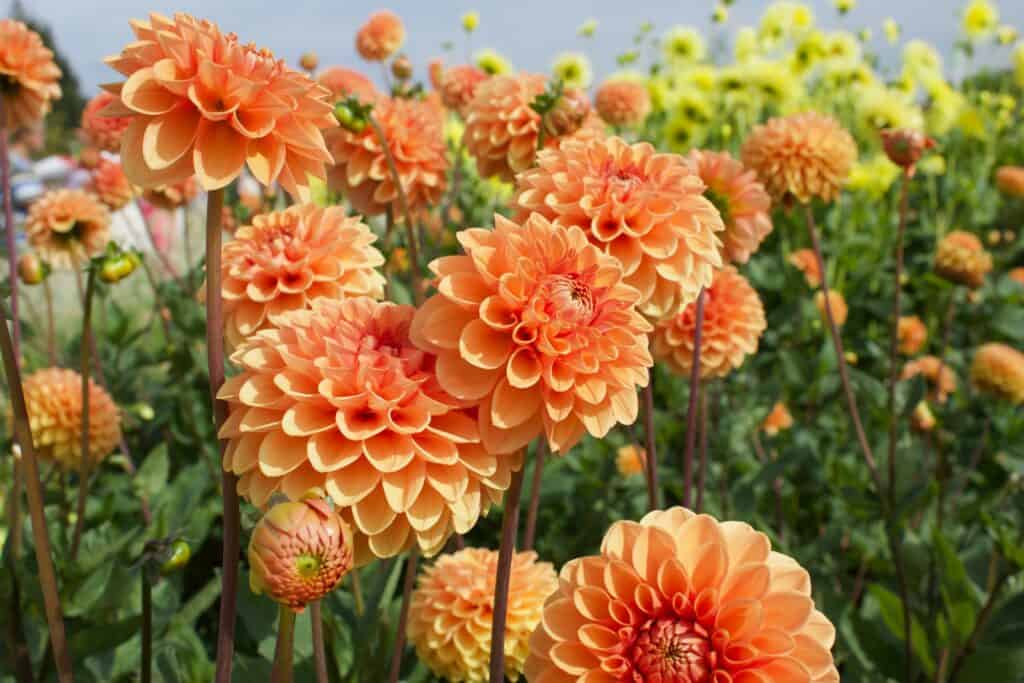
Perennials are plants that re-emerge year after year, unlike annuals which only last for one season. They’re ideal for homeowners who want a long-lasting garden that requires minimal upkeep — once established, perennials require less watering, fertilising, and pruning than annuals.
- Variety: Perennials come in a huge range of colours, shapes, and sizes. From tall, showy coneflowers to low-growing groundcovers like sedum, there’s a perennial for every garden style.
- Long-lasting: Because perennials come back year after year, they provide long-lasting beauty and interest in your garden. They also create a sense of floral continuity from year to year.
- Cost-effective: While perennials are more expensive than annuals initially, over time, they can be a cost-effective choice. They come back year after year — you don’t need to purchase new plants each season, which can save money in the long run.
- Sustainability: Perennials require fewer resources, like water and fertiliser, than annuals. Plus, they can help reduce the waste produced from annual gardening.
For colour, consistency, and year-round durability, perennials are a must-have for the time-poor gardener.
#7. Mulching

Mulch is an essential tool in a low-maintenance garden for several reasons:
- Less watering: One of the main benefits of mulch is moisture retention in the soil. You can water your plants less often, reducing the time and effort needed to maintain your garden.
- Fewer weeds: Mulch acts as a barrier, preventing weed seeds from germinating and growing in your garden. You can spend less time weeding and more time focusing on other garden-related projects and maintenance.
- Reduced soil erosion: Mulch helps prevent erosion by protecting the soil from wind and water damage. You won’t need to spend as much time replacing soil or repairing damage caused by erosion with mulch.
- Improved soil quality: As mulch breaks down, it adds organic matter to the soil, which can improve soil structure, increase nutrient content, and promote healthy soil microorganisms. Your plants will be healthier and more resilient and need less maintenance.
- Aesthetic appeal: Finally, mulch can add aesthetic appeal to your garden. By choosing the right type of mulch for your garden and applying it properly, you can create a neat and tidy appearance that requires minimal maintenance.
Like the sound of adding mulch to your garden? Browse through our collection of mulches and drop into Oz Landscape Supplies in Cameron Park or Toronto!
#8. Lawn alternatives

Sometimes, a traditional lawn isn’t practical; maybe you have limited time to maintain a lawn, or you live in an exceptionally dry climate, and grass tends to suffer in your area. The good news is that there are various lawn alternatives available that still look good and add character to your property.
- Xeriscaping minimises water usage in dry areas, typically through drought-tolerant plants and smart irrigation techniques. Gravel is often used in xeriscaping as it helps reduce water loss from the soil, adds an aesthetic appeal, and requires minimal maintenance compared to traditional lawns.
- Japanese gardens have minimal grass, focusing instead on highlighting individual plants, like an Acer or cherry tree, set in a gravel backdrop. This arrangement creates a striking focal point while maintaining a low-maintenance and water-efficient garden space.
- A rock garden is a great alternative to grass in small yards. Rock gardens feature an arrangement of rocks and compact plants, offering a vibrant and impactful visual appeal with their colourful plants, all while occupying minimal space.
- Gravel is a versatile lawn alternative for classic and modern gardens. It’s particularly effective in small front gardens where lawn maintenance is challenging and adds a security benefit with its distinctive sound.
- Bark creates a natural, comfortable feel in shaded areas under trees, where grass often struggles to grow. To enhance visual appeal and diversity, incorporate plants in areas not designated for seating, adding both colour and texture to these dark corners.
Implement these easy garden ideas with our quality landscaping supplies!
Creating a low-maintenance garden is a smart and practical choice for anyone who wants a beautiful outdoor space without dedicating too much time and effort to maintenance. With the simple backyard ideas listed here, you can design a garden that needs minimal upkeep while still delivering the colour and life you want to see in your front or back garden.
At Oz Landscape Supplies, we stock all the soil and mulches you need to create a thriving, low-maintenance garden! Browse through our landscaping supplies online and drop into our store in Toronto or Cameron Park. Our team will help find the right supplies for a successful garden.
